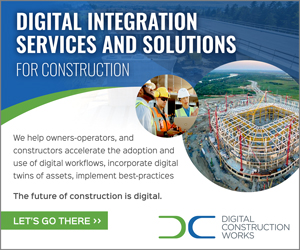Let’s make no mistake. In a global competitive business environment, the Enterprise and Business owners have to meet the demand of Customers, Investors, Vendors and Bankers. For this Quality, Price, On-time delivery, Profit, Compliance and R&D are the key and non-negotiable.
For this, Access to real-time data is a must and the ERP system becomes a natural choice. But unfortunately, the word ERP is associated with Cost, Complexity, business disruption and Failure.
The Evolution of ERP Systems: A Four-Decade Journey
Enterprise Resource Planning (ERP) systems have undergone a remarkable transformation over the past four decades, evolving from simple inventory management tools to comprehensive platforms that integrate various business functions.
This evolution has been driven by technological advancements, changing business needs, and globalization.
The Early Years (1960s-1970s)
- Material Requirements Planning (MRP): The concept of ERP emerged from MRP systems, initially developed for manufacturing. MRP focused on optimizing inventory levels and production schedules to minimize costs.
- Mainframe-Based Systems: These early systems were typically large, expensive, and required specialized IT teams to operate.
The Rise of ERP (1980s-1990s)
- Integration of Functions: ERP systems expanded beyond manufacturing to include other business functions such as finance, human resources, and customer relationship management.
- Client-Server Architecture: The shift to client-server architecture made ERP systems more accessible and scalable.
- Standardization: The emergence of industry-specific ERP solutions provided standardized processes and best practices.
The Cloud Era (2000s-2010s)
- Cloud-Based ERP: The advent of cloud computing revolutionized ERP delivery. Cloud-based ERP systems offered flexibility, scalability, and reduced IT costs.
- Mobility: The rise of smartphones and tablets led to the development of mobile ERP applications, enabling access to business data on the go.
- Analytics and Business Intelligence: ERP systems integrated with analytics tools to provide valuable insights into business performance.
The Future of ERP (2020s and Beyond)
- Artificial Intelligence (AI) and Machine Learning: AI and ML are being used to automate tasks, improve decision-making, and enhance predictive analytics.
- Internet of Things (IoT): Integration with IoT devices allows for real-time data collection and automation of processes.
- Sustainability and Social Responsibility: ERP systems are increasingly focused on sustainability and social responsibility, helping businesses meet environmental and ethical standards.
- Compliance: For countries to attract investment it is important to have compliance in place. As of 2014, 175 countries have adopted GST or VAT in some form or other. Even audit norms are getting more stringent. Hence adoption of ERP systems will become more mandatory.
Best practices for successful ERP implementation & Pros and cons of customizing ERP systems.
The global data on ERP failure or not meeting the desired objective is as high as 75%. So the Enterprises have to be more prepared before investing into the ERP projects. ERP is a cultural project rather than a technology project. More than money and Technology, the people factor is most crucial in making ERP projects successful.
- Define Clear Objectives: Clearly articulate the business goals you want to achieve with the ERP system.
- Involve Key Stakeholders: Ensure everyone involved understands the project’s importance and contributes to decision-making.
- Conduct a Thorough Needs Assessment: Identify your organization’s specific requirements and challenges.
- Choose the Right ERP Solution: Select a system that aligns with your business processes and future growth plans.
- Implement a Robust Change Management Plan: Prepare employees for the transition and address potential resistance.
- Provide Adequate Training: Ensure users are well-equipped to utilize the new system effectively.
- Data Migration: Plan and execute a smooth data migration process to avoid disruptions. Never have the cutoff more than 10 days. Always align the start date on a month beginning or a quarter beginning. Historic data will kill the ERP projects.
- Go Live Strategically: Choose a suitable go-live approach (big bang or phased) based on your organization’s size and complexity. I would support phased implementation.
- Audit, Monitor and Optimize: Continuously monitor the system’s performance and make necessary adjustments to ensure optimal results.
Standard ERP Vs Customized systems.
I feel the only way to mitigate the ERP adoption risk is to go for a standard ERP system. But an important word of caution is localization and upgrades have to be offered by the OEMs. There is one global Car. There are global Car makers but they make Cars for every country specifically to meet the design and regulatory norms. For example, Left and Right-hand driving, pollution & safety norms etc., The scope of customization for the core functionality cannot go beyond 2 to 4% (not referring to reports). Most of the ERP projects fail because these changes are left to local Implementation partners.
ERP has to be vertical specific and regional specific. I have seen enterprises customizing Accounting and CRM software into an ERP system. This will be more like making a Car out of a motor bike. We know this will be unfit for real world use.
- Flexibility and Configurability: Most standard ERP solutions offer a high degree of flexibility, allowing you to configure the system to match your specific workflows and processes.
- Industry-Specific Modules: Many ERP vendors provide industry-specific modules that are pre-configured to address the unique needs of particular industries (e.g., manufacturing, healthcare, retail).
- Customizations Within the Framework: While full-scale customization may not be necessary, you can often make modifications within the ERP’s framework to tailor it to your specific requirements.
- App Integration: Many ERP systems can be integrated with third-party applications, allowing you to add functionalities that are not included in the core solution.
- Consulting: ERP vendors often offer consulting services to help you identify the best configuration options and leverage the system’s capabilities to meet your unique needs.
- Project Management: This is most crucial for the success of any ERP project. This cannot be done by the ERP team or the Client team.
By carefully evaluating your business requirements and leveraging the flexibility and configurability of standard ERP solutions, you can effectively address your unique needs without resorting to extensive customization.
| “A combination of Enterprise ready ERP system with 100% localization, with well experienced functional & implementation consultants and strong Project Manager can make the ERP projects more successful” |
| “If an ERP project is not up and running in 6 to 10 weeks then there is something seriously wrong. The software, strategy, lack of project management or stakeholders’ involvement” |
| “Never sign up for an ERP project without 14 days of trial with real data and all core business process and statutory compliance fully evaluated with total user acceptance” |

















